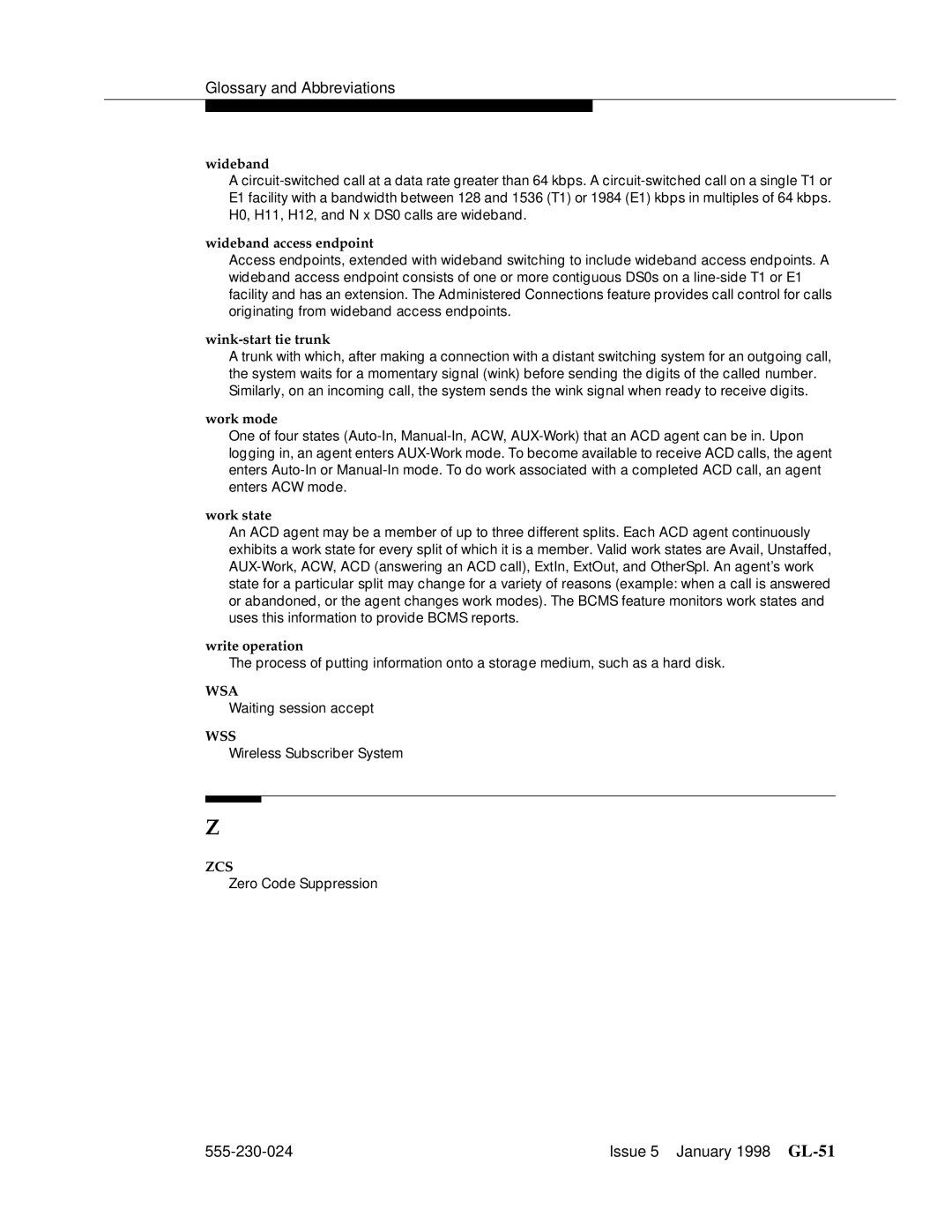
Glossary and Abbreviations
wideband
A
wideband access endpoint
Access endpoints, extended with wideband switching to include wideband access endpoints. A wideband access endpoint consists of one or more contiguous DS0s on a
wink-start tie trunk
A trunk with which, after making a connection with a distant switching system for an outgoing call, the system waits for a momentary signal (wink) before sending the digits of the called number. Similarly, on an incoming call, the system sends the wink signal when ready to receive digits.
work mode
One of four states
work state
An ACD agent may be a member of up to three different splits. Each ACD agent continuously exhibits a work state for every split of which it is a member. Valid work states are Avail, Unstaffed,
write operation
The process of putting information onto a storage medium, such as a hard disk.
WSA
Waiting session accept
WSS
Wireless Subscriber System
Z
ZCS
Zero Code Suppression
Issue 5 January 1998 |
